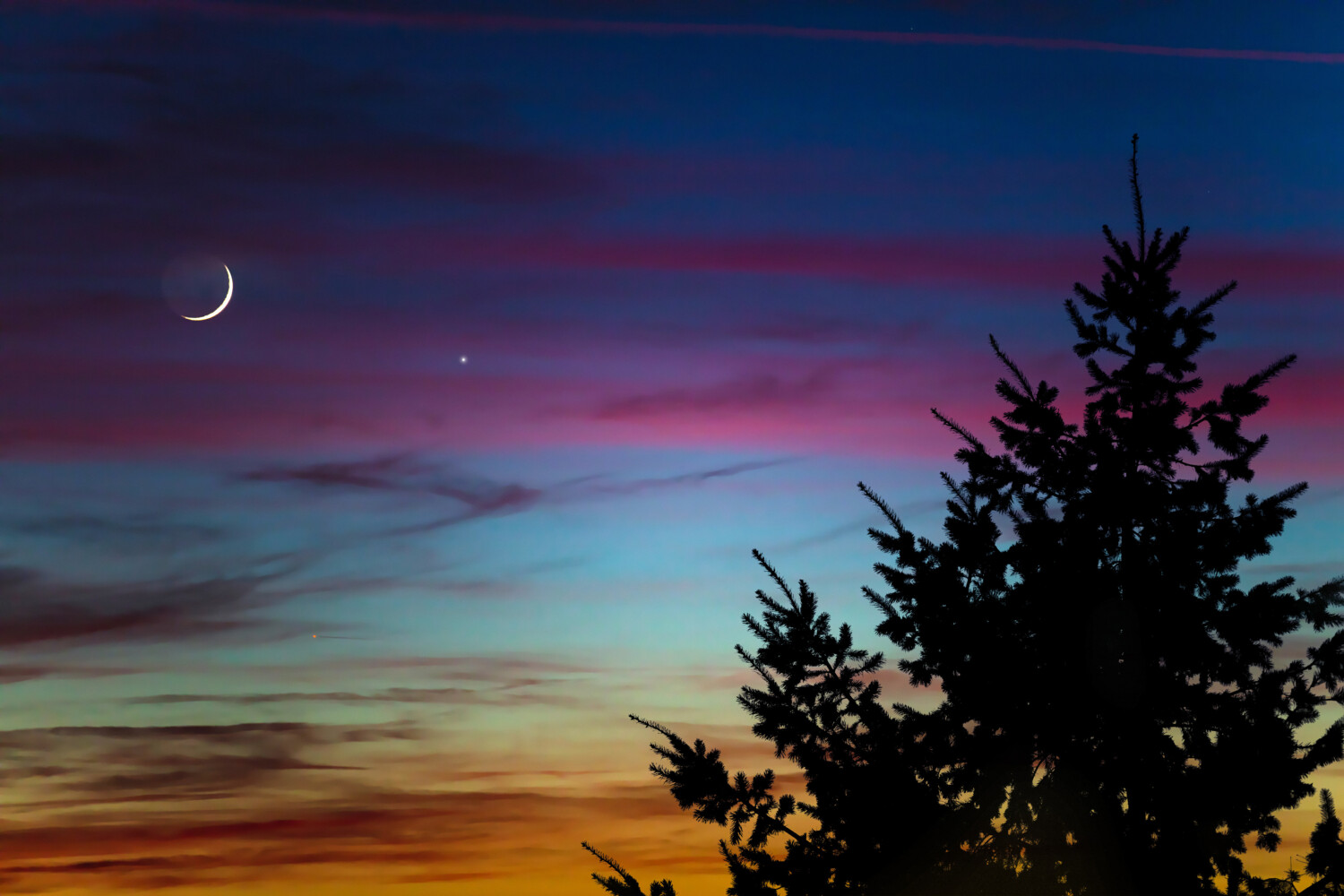Stargazers have had a lot to smile about over the past few weeks.
Only a few days ago, five planets aligned in the pre-dawn sky. With the summer solstice on the horizon, a pair of planets will line up again below a bright crescent moon for a beautiful nighttime show.
We’ll be able to see Venus and Mars just beneath a thin crescent moon on the evening of June 21. If you want to catch this celestial event, all you need is a pair of binoculars. You may be even able to catch the planetary alignment with the naked eye if you time it right.

EarthSky reports that Wednesday’s crescent moon, which will have the “Da Vinci glow” or Earthshine, will take center stage in this event. Just after sunset, the moon will rise and Venus will shine brightly to its lower right side. Mars, which is dimmer than Venus due to its size and distance from Earth, will appear to the upper left of Venus — almost in between the moon and Venus.
The Sky and Telescope Twitter account posted a helpful star chart to help amateur skywatchers locate this planetary alignment, which should start to be visible about one hour after sunset.
The sky highlight of the week is Venus and Mars in the west in late twilight, especially with the Moon joining them on Wednesday. After dark look south-southeast for orange Antares, "the Betelgeuse of summer." Both are 1st-magnitude "red" supergiants.https://t.co/6KrtndRJTp pic.twitter.com/IWLVlYuUsN
— Sky & Telescope (@SkyandTelescope) June 16, 2023
In addition to our closest planetary neighbors, Venus and Mars, three other stars will surround the planetary alignment. First, there’s Regulus, the brightest star in the constellation Leo the Lion. You’ll spot Regulus to the left of the moon. Then, if you look down and to the right of the moon, you’ll see the “twin stars” Castor and Pollux, two of the stars of the Gemini constellation.
All of this happens just after sunset on the summer solstice, the longest day of the year as far as visible sunlight. It marks the official start of the summer season. On the day of the summer solstice, the Earth reaches the part of its orbit around the sun where the Northern Hemisphere gets the most direct angle on sunlight, according to The Old Farmer’s Almanac.
This day has been celebrated for centuries around the world, including a large gathering at Stonehenge in England at sunrise. If you’d like to watch the sunrise from Stonehenge, you can watch the live stream on the the official YouTube channel for England’s landmarks, English Heritage, on June 21 at 10:07 a.m. EDT.
This story originally appeared on Simplemost. Check out Simplemost for additional stories.


